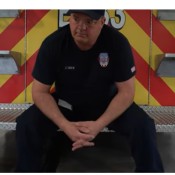Insomnia
- Home
- Insomnia
Insomnia
Study results published in the February 15, 2016, issue of the Journal of Clinical Sleep Medicine indicate that insomnia and nightmares appear to influence depression symptoms specifically through the pathway of explicit emotion regulation difficulties. “Sleep disturbances may impair the ability to access and leverage emotion regulation strategies effectively, thus conferring risk for negative affect and depression,” wrote the authors.
The study included an Internet-based survey of 880 current and retired United States firefighters, aged 18 to 82 years, who answered questions regarding behavioral health. Self-report measures included the Center for Epidemiologic Studies Depression Scale, Insomnia Severity Index, PTSD Checklist, and Difficulties in Emotion Regulation Scale.
Nearly 40% of participants reported clinically significant depression symptoms, more than one-half reported insomnia symptoms, and about 20% reported nightmare problems, all of which demonstrated a strong association with emotion regulation difficulties. Bootstrapped mediation analyses showed that the indirect effects of overall emotion regulation difficulties were significant for the association between insomnia and depression as well as between nightmares and depression. Limited access to problem-solving skills, the ability to decrease negative emotions, and other emotion regulation strategies emerged as the strongest, most significant indirect effect for both associations.
“Our study findings suggest that firefighters with sleep difficulties are likely to experience greater struggles accessing strategies to regulate their emotions, especially when feeling upset. This, in turn, may lead to or worsen feelings of depression and low mood,” said lead author Melanie Hom, MS, a doctoral candidate in the Laboratory for the Study and Prevention of Suicide-Related Conditions and Behaviors within the Department of Psychology at Florida State University.
“These results are important because they provide a plausible explanation for why and how sleep problems may contribute to depression, which are critical questions for prevention and intervention,” Hom said.
The findings may shed some light on approaches to treating the estimated 30% to 35% of people in the United States with transient insomnia symptoms—according to the American Academy of Sleep Medicine—as well as the 10% of adults affected by chronic insomnia (occurring at least three times weekly for at least 3 months) and the 2% to 8% of the general population who have a current problem with nightmares. The study results maybe also be encouraging to those with trauma-related nightmares, the most consistent problem reported by people with PTSD.
“Firefighters are typically faced with many demands, including difficult work schedules, and they often both witness and experience traumatic events,” said Hom. “It is not surprising that firefighters may experience sleep problems and depression, but it is critical that greater efforts be made to prevent and treat these problems.” She and her co-authors suggest that emotion dysregulation may be an important therapeutic target for reducing depression risk among firefighters and others who experience insomnia and nightmares.
Courtesy of: mdmag.com
- Temporary blackouts or memory loss.
- Recurrent arguments or fights with family members or friends as well as irritability, depression, or mood swings.
- Continuing use of alcohol to relax, to cheer up, to sleep, to deal with problems, or to feel “normal.”
- Headache, anxiety, insomnia, nausea, or other unpleasant symptoms when one stops drinking.
- Flushed skin and broken capillaries on the face; a husky voice; trembling hands; bloody or black/tarry stools or vomiting blood; chronic diarrhea.
- Drinking alone, in the mornings, or in secret.
- Loss of Control: Drinking or drugging more than a person wants to, for longer than they intended, or despite telling themselves that they wouldn’t do it this time.
- Neglecting Other Activities: Spending less time on activities that used to be important (hanging out with family and friends, exercising, pursuing hobbies or other interests) because of the use of alcohol or drugs; drop in attendance and performance at work or school.
- Risk Taking: More likely to take serious risks in order to obtain one’s drug of choice.
- Relationship Issues: People struggling with addiction are known to act out against those closest to them, particularly if someone is attempting to address their substance problems; complaints from co-workers, supervisors, teachers or classmates.
- Secrecy: Going out of one’s way to hide the amount of drugs or alcohol consumed or one’s activities when drinking or drugging; unexplained injuries or accidents.
- Changing Appearance: Serious changes or deterioration in hygiene or physical appearance – lack of showering, slovenly appearance, unclean clothes.
- Family History: A family history of addiction can dramatically increase one’s predisposition to substance abuse.
- Tolerance: Over time, a person’s body adapts to a substance to the point that they need more and more of it in order to have the same reaction.
- Withdrawal: As the effect of the alcohol or drugs wear off the person may experience symptoms such as: anxiety or jumpiness; shakiness or trembling; sweating, nausea and vomiting, insomnia, depression, irritability, fatigue or loss of appetite and headaches.
- Continued Use Despite Negative Consequences: Even though it is causing problems (on the job, in relationships, for one’s health), a person continues drinking and drugging







